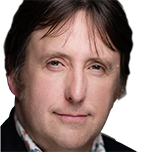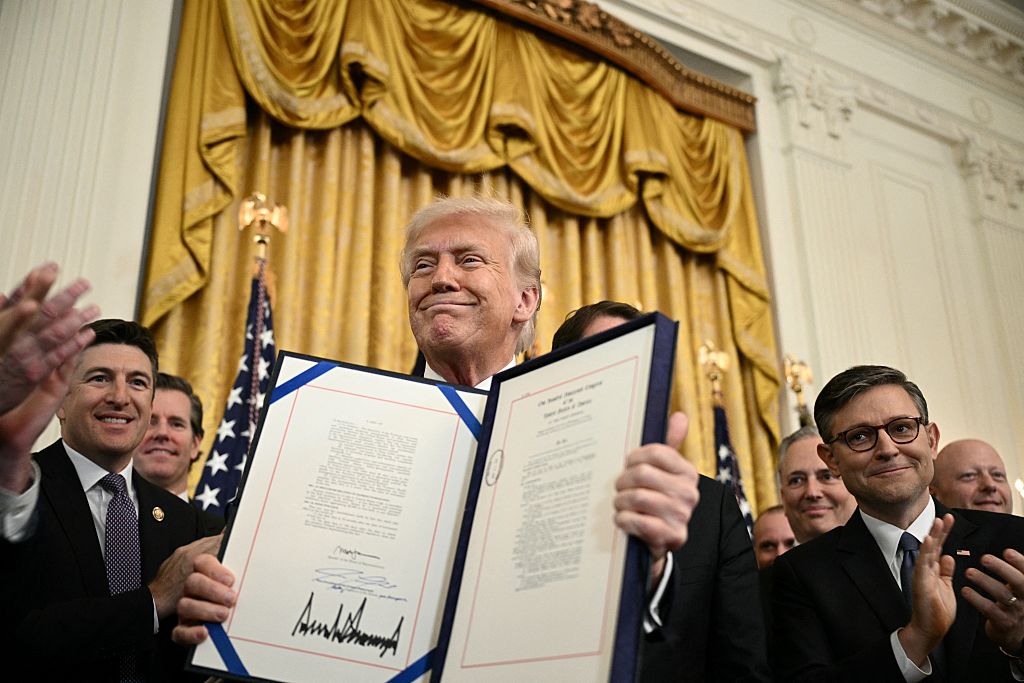How to improve economic output using the supply-side approach
Boosting potential economic output through public investment is crucial, says David C. Stevenson


“The evolution of potential output (or the ‘supply-side’) is the most important determinant of long-term economic prospects, is a key driver of our economic and fiscal forecasts and has been a major focus of economic policy under successive governments.”
This is the tale of two recent reports that should interest everyone worried by our long-term economic record. The dry comment above introduces a report that is unlikely to be read by millions but should be. It is by a gaggle of economists who work for the Office for Budget Responsibility (OBR), that August economic body that has found itself, uncomfortably, in the political spotlight in recent years.
It’s as clear a statement as anyone can make about why those of us who fret about poor productivity and meagre economic growth rates need to think about the supply side and, more pertinently, about public investment, especially in infrastructure – cue much discussion about HS2, bridges, tunnels, etc. This matters, and courtesy of the report, we can at least now begin to put some numbers on how much it matters.
MoneyWeek
Subscribe to MoneyWeek today and get your first six magazine issues absolutely FREE

Sign up to Money Morning
Don't miss the latest investment and personal finances news, market analysis, plus money-saving tips with our free twice-daily newsletter
Don't miss the latest investment and personal finances news, market analysis, plus money-saving tips with our free twice-daily newsletter
America's economic growth ramps up
But I mentioned two reports, the first of which will probably be read by many more people, especially across the English Channel. It’s by Mario Draghi, who you might remember from his days as president of the European Central Bank and then Italian prime minister. “The future of European competitiveness: a competitiveness strategy for Europe” is actually a fascinating read and a wake-up call for the eurozone about why the GDP gap between the EU and the US has widened from 15% in 2002 to 30% in 2023. Compounding that challenge is the fact that around two million workers a year will be leaving the labour market by 2042.
Draghi focuses on factors, including (the lack of) innovation and access to venture capital. A key statistic is that Europe hasn’t created a single company currently valued at more than €100 billion. By contrast, the US has produced six worth more than €1 trillion. To quote the respected economic historian and commentator Adam Tooze, unless this is rectified, “Europe faces the ‘slow agony’ of economic decline”.
But the most interesting revelation is that investment as a share of GDP in Europe has declined over the last half-century. Most of us would assume – as I did – that given America’s small-government leanings, US public sector investment was lagging behind Europe’s. You’d be wrong. Sure, the French might boast shiny new high-speed trains while the Americans don’t even have a single high-speed train network. Yet US government investment has been much more pronounced, even if a large slug of it might be related to the so-called military-industrial complex, or Silicon Valley (or both).
This brings us to the UK, where public-sector investment, especially in infrastructure, has – surprise, surprise – been lagging even that of Europe. Looking at the records here in the UK, public sector net investment (PSNI) has averaged around 2.1% of GDP since 2010-2011, rather low by global standards.
And it’s not getting any better soon unless Rachel Reeves finds a new money tree (via property and wealth taxes) near Downing Street. Capital spending on public investment has been cut back repeatedly in the UK, including by the latest administration, which promptly scaled back several projects, including the tunnel near Stonehenge, blaming the previous government.
That said, this government has pledged £3.4 billion of additional capital departmental expenditure limit to boost NHS productivity and a further £0.8 billin for other public services, both to be spent from 2025. But the capital expenditure challenge is big. Hospitals alone have a maintenance backlog of £10.2billion, while the criminal courts and prisons have a combined backlog of £2.4 billion. The problem, as cynical readers will already have surmised, is that while everyone says they think public investment is significant, in truth, most voting citizens aren’t entirely convinced, especially if it means, say, a new prison being built near them. They might prefer that money be spent on more doctors to cut their waiting lists.
Building infrastructure is too expensive
It is grist to the mill of various NIMBY-minded folk that when we do undertake major public-sector projects, it takes forever and costs far too much. Typical of this is a recent observation (on public transport infrastructure) by Ben Hopkinson of the think tank Britain Remade, which revealed that “it costs more to build new tram networks in Britain than it does almost anywhere else in the world”.
“Birmingham’s Eastside Extension is a 1.05-mile addition to the city’s tram network that will run to the future HS2 station at Curzon Street. Barring any further price rises, it will cost £245 million, just a little less than the £260 million Besançon spent on its entire nine-mile network.” And for trams, read power stations, trains, hospitals, prisons, and so on.
Faced with these challenges, one can easily see why quietly cutting public investment, especially in infrastructure, is the easy way out. This brings us to the OBR report, which valiantly fights its corner by building various models that show the relationship between public investment and its impact on potential economic output. It’s that supply-side again. What’s so interesting about this report is that the authors are forensic in their analysis and diligent in their number crunching.
This isn’t simply an “all public investment is a fab idea” study designed to delight The Guardian readers. It carefully evaluates both the demand-side impact (creating jobs and increasing household income), which can be short-lived, and the supply-side, where potential output is permanently pushed higher – and productivity, hopefully, is also boosted. The devil is always in the detail, of course, especially with contested infrastructure projects, so the economists carefully analyse lags and timescales (time to spend, time to complete and time to use) and then build up a model that spews out likely impacts with various elasticities (an economist’s way of saying results vary by context).
The bottom line of this very detailed report is that a sustained 1% increase in public investment could plausibly increase potential output by just under 0.5% after five years and by around 2.5% in the long run (50 years). These numbers sound small, but cumulatively, they will make a huge difference to our nation’s wealth and pay for all those extra public services we say we need.
Remember the bigger picture
Dig into the report and you’ll find subtle observations. Not least that not every public project dreamt up by civil servants makes sense. But perhaps the most important point is in the conclusion, when the authors declare that “The implied internal rates of return are positive [for many public investment projects], although the return to the exchequer is likely to be much smaller than the return to the economy”. Therein lies the challenge. The models used by the Treasury may be a tad short-sighted as they sometimes miss the more comprehensive economic benefit to the broader economy.
That message also needs to be repeated to voters and constituents. Stop always focusing on what a project will do for your particular neighbourhood and think about how a project can boost the national growth rate and kick-start a decade of higher productivity. Public-sector investment matters; we don’t spend enough money on it (a claim nearly every political party would agree with), and we need to spend more now if we’re not, like the rest of Europe, going to fall farther behind the US.
This article was first published in MoneyWeek's magazine. Enjoy exclusive early access to news, opinion and analysis from our team of financial experts with a MoneyWeek subscription.
Get the latest financial news, insights and expert analysis from our award-winning MoneyWeek team, to help you understand what really matters when it comes to your finances.

David Stevenson has been writing the Financial Times Adventurous Investor column for nearly 15 years and is also a regular columnist for Citywire.
He writes his own widely read Adventurous Investor SubStack newsletter at davidstevenson.substack.com
David has also had a successful career as a media entrepreneur setting up the big European fintech news and event outfit www.altfi.com as well as www.etfstream.com in the asset management space.
Before that, he was a founding partner in the Rocket Science Group, a successful corporate comms business.
David has also written a number of books on investing, funds, ETFs, and stock picking and is currently a non-executive director on a number of stockmarket-listed funds including Gresham House Energy Storage and the Aurora Investment Trust.
In what remains of his spare time he is a presiding justice on the Southampton magistrates bench.
-
 5 investment trusts for your pension
5 investment trusts for your pensionInvestment trusts are often a good choice for long term growth and income options, but which ones should you consider for your pension?
-
 Inheritance tax climbdown as agricultural property relief threshold raised
Inheritance tax climbdown as agricultural property relief threshold raisedReforms to agricultural property relief had sparked strong opposition, and the government has now diluted its controversial inheritance tax plans for farmers
-
 The steady rise of stablecoins
The steady rise of stablecoinsInnovations in cryptocurrency have created stablecoins, a new form of money. Trump is an enthusiastic supporter, but its benefits are not yet clear
-
 Goodwin: A superlative British manufacturer to buy now
Goodwin: A superlative British manufacturer to buy nowVeteran engineering group Goodwin has created a new profit engine. But following its tremendous run, can investors still afford the shares?
-
 A change in leadership: Is US stock market exceptionalism over?
A change in leadership: Is US stock market exceptionalism over?US stocks trailed the rest of the world in 2025. Is this a sign that a long-overdue shift is underway?
-
 Modern Monetary Theory and the return of magical thinking
Modern Monetary Theory and the return of magical thinkingThe Modern Monetary Theory is back in fashion again. How worried should we be?
-
 Metals and AI power emerging markets
Metals and AI power emerging marketsThis year’s big emerging market winners have tended to offer exposure to one of 2025’s two winning trends – AI-focused tech and the global metals rally
-
 King Copper’s reign will continue – here's why
King Copper’s reign will continue – here's whyFor all the talk of copper shortage, the metal is actually in surplus globally this year and should be next year, too
-
 The coming collapse in the jobs market
The coming collapse in the jobs marketOpinion Once the Employment Bill becomes law, expect a full-scale collapse in hiring, says Matthew Lynn
-
 Renewable energy funds are stuck between a ROC and a hard place
Renewable energy funds are stuck between a ROC and a hard placeRenewable energy funds were hit hard by the government’s subsidy changes, but they have only themselves to blame for their failure to build trust with investors